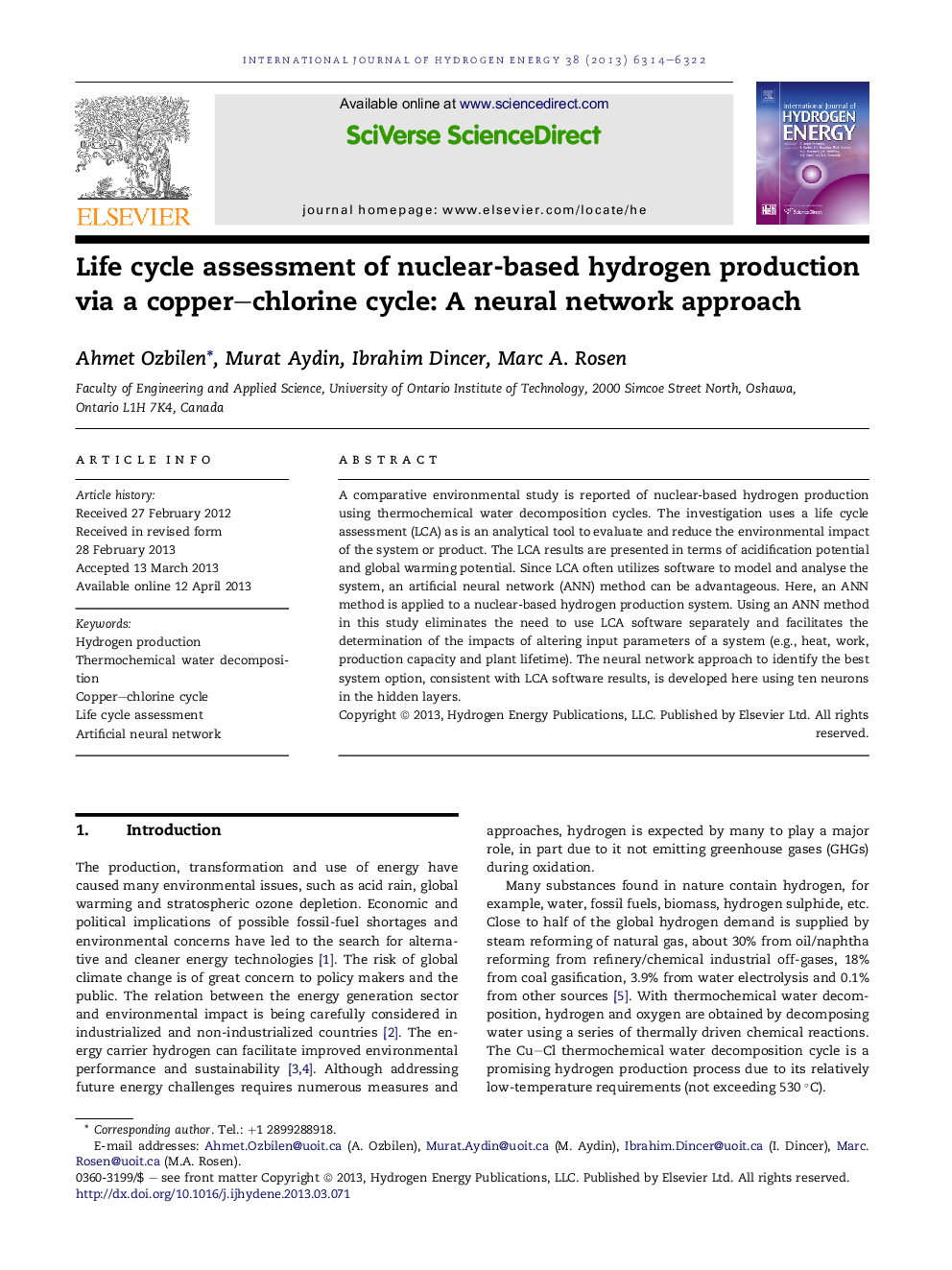| کد مقاله | کد نشریه | سال انتشار | مقاله انگلیسی | نسخه تمام متن |
|---|---|---|---|---|
| 1273744 | 1497530 | 2013 | 9 صفحه PDF | دانلود رایگان |

• Nuclear-based H2 production via a Cu–Cl cycle is modelled using ANN.
• The present method eliminates to use an LCA software.
• AP, GWP and H2 plant efficiency are calculated using ANN.
• The best ANN system option is developed with ten neurons in the hidden layers.
A comparative environmental study is reported of nuclear-based hydrogen production using thermochemical water decomposition cycles. The investigation uses a life cycle assessment (LCA) as is an analytical tool to evaluate and reduce the environmental impact of the system or product. The LCA results are presented in terms of acidification potential and global warming potential. Since LCA often utilizes software to model and analyse the system, an artificial neural network (ANN) method can be advantageous. Here, an ANN method is applied to a nuclear-based hydrogen production system. Using an ANN method in this study eliminates the need to use LCA software separately and facilitates the determination of the impacts of altering input parameters of a system (e.g., heat, work, production capacity and plant lifetime). The neural network approach to identify the best system option, consistent with LCA software results, is developed here using ten neurons in the hidden layers.
Journal: International Journal of Hydrogen Energy - Volume 38, Issue 15, 20 May 2013, Pages 6314–6322